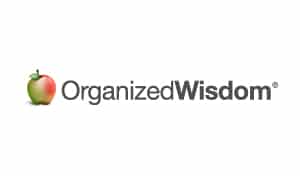A new study, released by the American Gastroenterological Association, shows outpatient clinics across the United States witnessed opiate prescriptions for chronic abdominal pain more than double between 1997 and 2008. Dr. Michael Lowenstein, co-medical director for the Waismann Method, an advanced procedure for rapid opiate detox, warns that this increase signals the gaining popularity of prescription painkillers and its general use to treat any type of pain, regardless of the source or cause.
“Potential side effects of prescription painkillers include gastrointestinal symptoms, like constipation, nausea, vomiting, bloating and cramping, which can lead to more severe abdominal pain,” said Dr. Lowenstein. “The fact that physicians are prescribing opiate medications for persistent abdominal pain indicates that prescription painkillers have become a go-to treatment to instantly satisfy patients’ demands, without really understanding if there are advantages of their use. This study indicates physicians may be prescribing opiate painkillers for almost any symptom or condition without fully evaluating the risks and potentially negative consequences for patients.”
According to the study, while outpatient visits for chronic abdominal pain decreased between 1997 and 2008 from 14.8 million to 12.2 million visits, opiate prescriptions to treat these patients significantly rose. Opiates were prescribed for 5.9 percent of chronic abdominal pain cases from 1997 through 1999. From 2006 through 2008, the number of chronic abdominal pain cases treated with prescription painkillers rose to 12.2 percent. The study also shows that while opiate prescriptions were less common among uninsured patients, they were most common among patients aged 25 to 40 years old.
Researchers of the American Gastroenterological Association speculate that this increase may be due to physicians identifying pain as a “fifth vital sign,” by measuring and taking into consideration a patient’s pain level in diagnosing their condition. However, since pain is a very subjective symptom it is easy to overlook or mistreat a patient based on their pain levels. In addition, patients who are prescribed opiate painkillers without appropriate testing may experience an increase in the severity of their condition, and are also at risk of neglecting additional health issues that could be the main cause of their pain. Chronic abdominal pain can be a challenge to treat, but in some cases unusual or severe pain in the abdomen can be an indicator of a more significant problem, like stomach or cervical cancer, according to Dr. Lowenstein.
The Waismann Method is a safe and proven treatment for opiate dependency that utilizes the most advanced medical techniques available. The rapid opiate detoxification procedure is carried out in a full-service hospital in Southern California by board-certified anesthesiologists while patients remain under deep sedation, so they experience minimal conscious withdrawal or suffering. Following medical treatment, patients are taken to Domus Retreat for an assessment to determine any underlying causes of dependency, and a customized aftercare plan is assigned to ensure a healthy and effective transition to life without opiates. Patients treated with the Waismann Method achieve an extraordinarily high success rate because they no longer fight the constant physical cravings for opiates that have led them to relapse in the past.
For more information about the Waismann Method please visit opiates.com. For interviews contact Nicolette Surh at 858-888-0149 or send an email to Nicolette(at)rkpr(dot)net.
About The Waismann Method
Performed in a hospital intensive care unit, the Waismann Method involves rapid cleansing of opiate receptors in a patient’s brain while the patient is under deep sedation, reversing the chemical imbalance. During the procedure, the patient will experience minimal conscious withdrawal, and will be able to return home within days rather than weeks or months as with traditional detox programs. Around seventy percent of the prescription drug dependent patients who are treated with the Waismann Method remain drug free after one year. Please visit opiates.com for more information.
Understanding the Interaction of Tramadol and Ibuprofen for Pain Management
Pain management is a critical component of healthcare, particularly when addressing conditions that involve both pain and inflammation. Two commonly used medications in this regard are Tramadol and Ibuprofen....
















